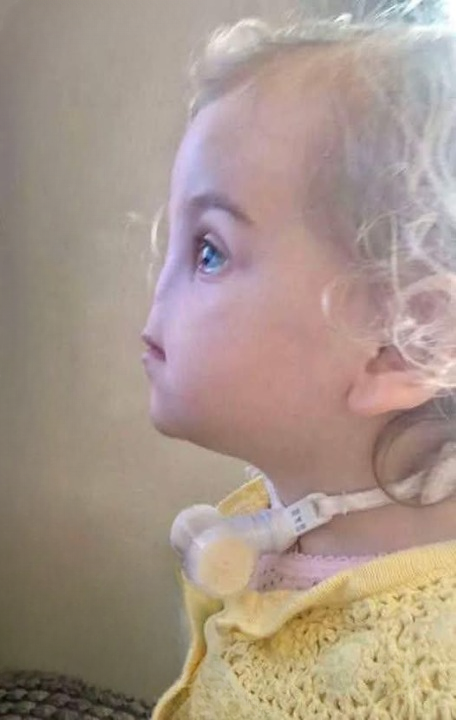Tessa Evans, a young girl born on Valentine’s Day in 2013, has touched the hearts of many with her courage and determination in the face of a rare genetic condition. Diagnosed with Bosma arhinia microphthalmia syndrome (BAMS), a disorder affecting the development of the nose and eyes, Tessa’s journey has been both challenging and inspiring. Despite the obstacles posed by her condition, her story has become a beacon of hope, highlighting the progress of medical science and the power of family support.
Understanding Bosma Arhinia Microphthalmia Syndrome
Bosma arhinia microphthalmia syndrome is an extremely rare condition marked by the absence of a nose (arhinia) and underdeveloped eyes (microphthalmia). In some cases, it can also affect brain development and other bodily structures. First identified in 1981, only a few dozen cases have ever been reported worldwide. The condition arises from mutations in specific genes, leading to a variety of developmental challenges.
Although BAMS is rare, advances in genetics and medical care have improved the ability to diagnose and manage it. Its impact varies widely, often causing lifelong difficulties with breathing, vision, and developmental milestones.
Tessa Evans’ Journey
For Tessa, BAMS has been both a personal challenge and a platform for raising awareness about the condition. While much of her medical history remains private, her parents, Grainne and Nathan Evans of Maghera, Northern Ireland, have been tireless advocates, seeking the best care and solutions for their daughter.
Tessa’s story demonstrates the importance of early intervention, the impact of medical progress, and the extraordinary dedication of families navigating rare conditions. Despite significant hurdles, her resilience and her family’s unwavering support highlight the strength required to face such challenges.
Medical Advances and Treatment Options
There is currently no cure for BAMS, but medical science continues to offer hope. Treatments aim to manage symptoms and enhance quality of life. These include prosthetics, reconstructive surgeries, and therapies to assist with vision and hearing impairments. Such interventions help children like Tessa lead fulfilling lives despite their condition.
One common procedure for those with BAMS is a tracheostomy, which assists with breathing difficulties. Advances in medical technology, including 3D printing and imaging, have opened new possibilities in reconstructive surgery, enabling better facial structure and functionality. These innovations give children born without a nose improved appearance and improved function, demonstrating how technology can transform lives.
The Power of Family Support and Advocacy
Tessa’s story underscores the crucial role of family support and advocacy. Her parents have shared their experiences to raise awareness, helping others understand the realities of living with BAMS. Their love, resilience, and commitment to securing the best care for Tessa have been central to her journey.
Through their advocacy, Grainne and Nathan Evans have not only supported Tessa but have also contributed to wider public awareness of rare medical conditions. Their efforts demonstrate the importance of community, research, and education in improving the lives of children with rare disorders.
Raising Awareness and Supporting Research
Highlighting rare conditions like BAMS is essential for improving care and advancing research. Greater awareness leads to better funding, improved treatments, and a deeper understanding of the challenges faced by those affected. Tessa’s story is both a testament to her courage and a reminder of the ongoing need for research into rare diseases.
As recognition of conditions like BAMS grows, research efforts continue to expand, offering hope for breakthroughs that could improve outcomes for children like Tessa and others worldwide.
A Future of Hope
While living with BAMS presents significant challenges, medical advances and increased awareness offer hope for a brighter future. Support from family, healthcare professionals, and the wider community is key to ensuring children like Tessa can thrive. Her journey exemplifies the resilience of children and families navigating rare conditions, reminding us of the power of love, advocacy, and innovation.
Conclusion: A Story of Resilience
Tessa Evans’ life is a story of strength and perseverance. Her journey with Bosma arhinia microphthalmia syndrome, supported by her devoted family, highlights the importance of early diagnosis, medical advancements, and advocacy. Through courage and determination, Tessa continues to inspire, proving that even in the most challenging circumstances, hope and resilience can lead to remarkable possibilities.
